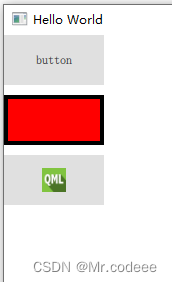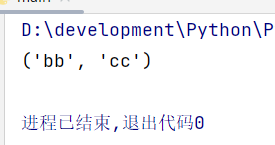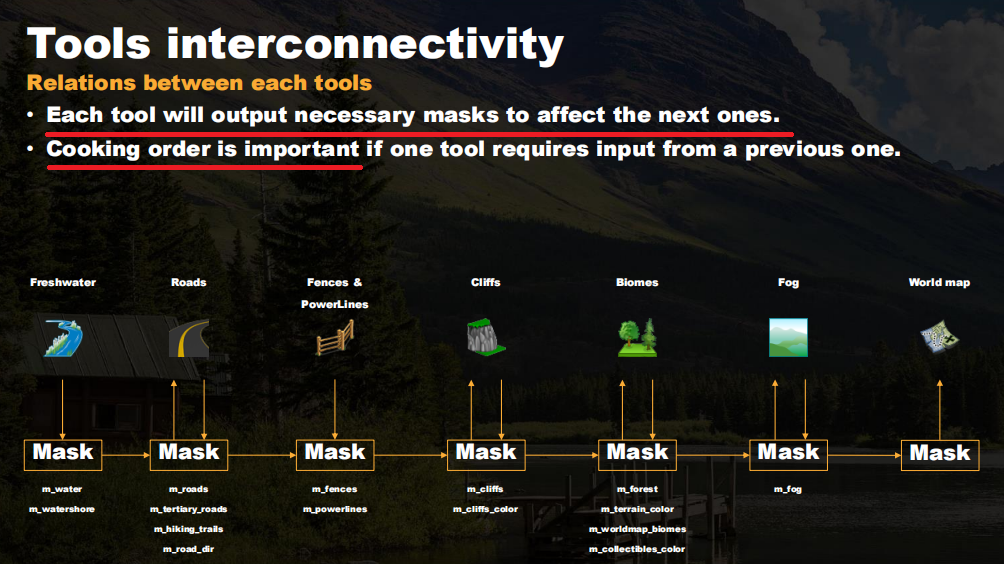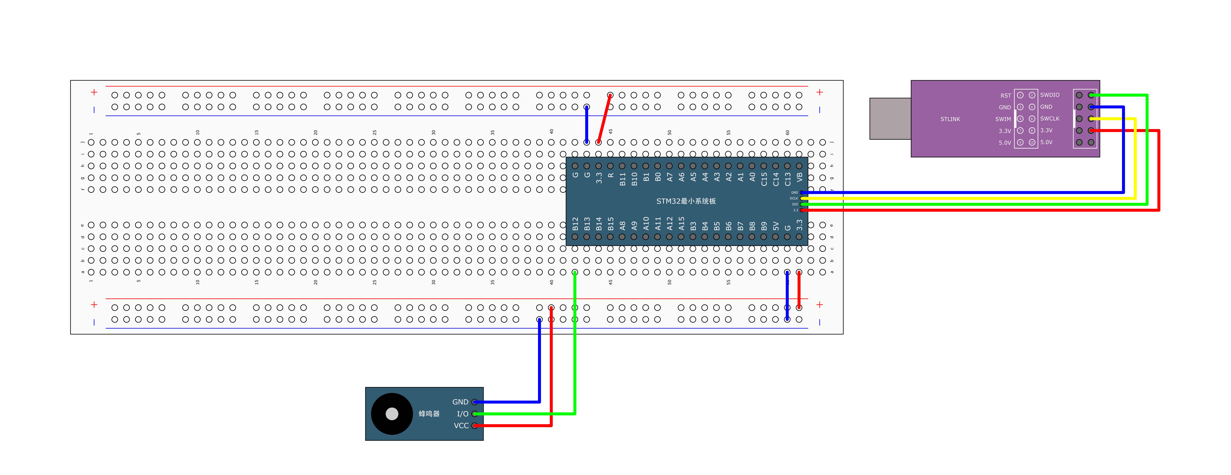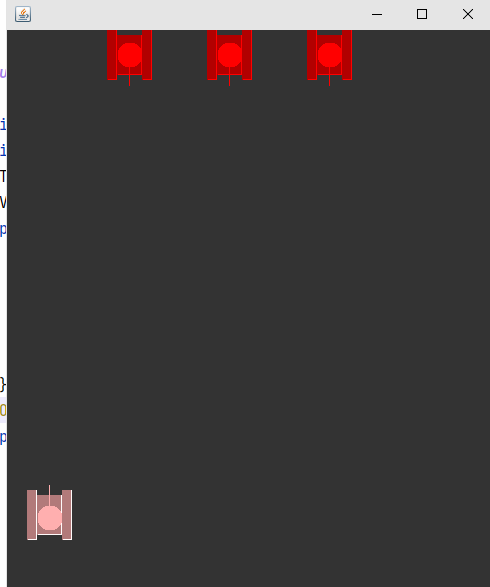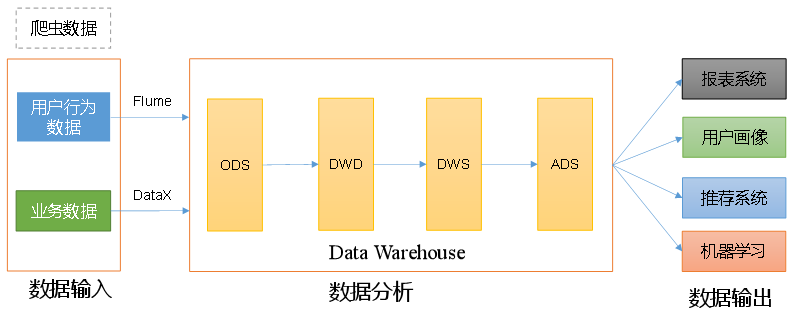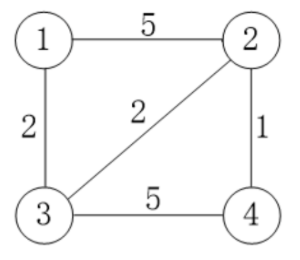文章目录
- 前言
- 一、历年真题
- 二、核心考点汇总
- 2.1 什么是软件体系架构?(软件体系结构的定义)
- 2.2 架构风格优缺点
- 2.3 质量属性
- 2.4 质量评估
前言
主要针对西安电子科技大学《软件体系结构》的核心考点进行汇总。
【期末期间总结资料如下】
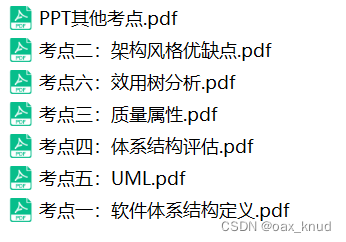
针对西电计科院软件工程专业大三《软件体系结构》期末考试复习资料。大部分知识点来自于老师的PPT,放心使用。
题型包括:简答题,选择题,大题
(如需要软件体系结构全部笔记资料,可以联系邮箱oax_knud@163.com
其他资料参考:西电计算机专业课资料汇总
一、历年真题

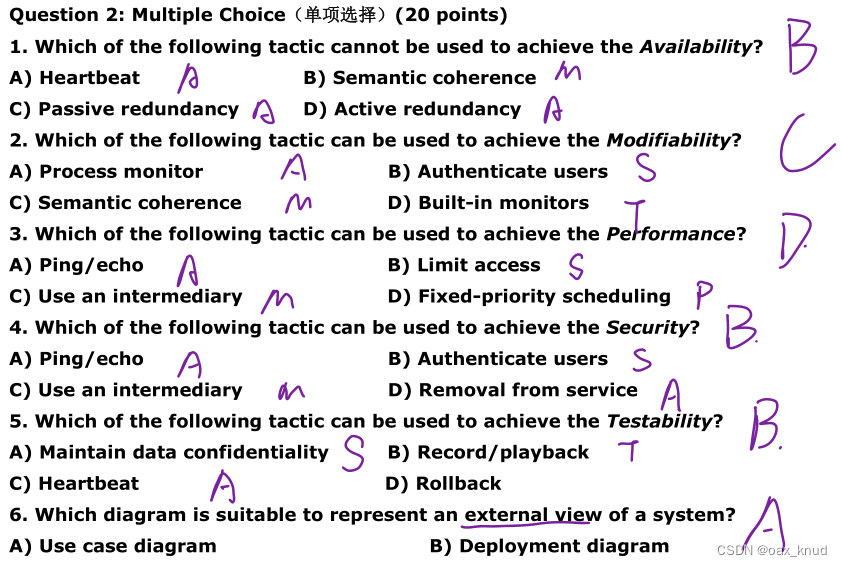
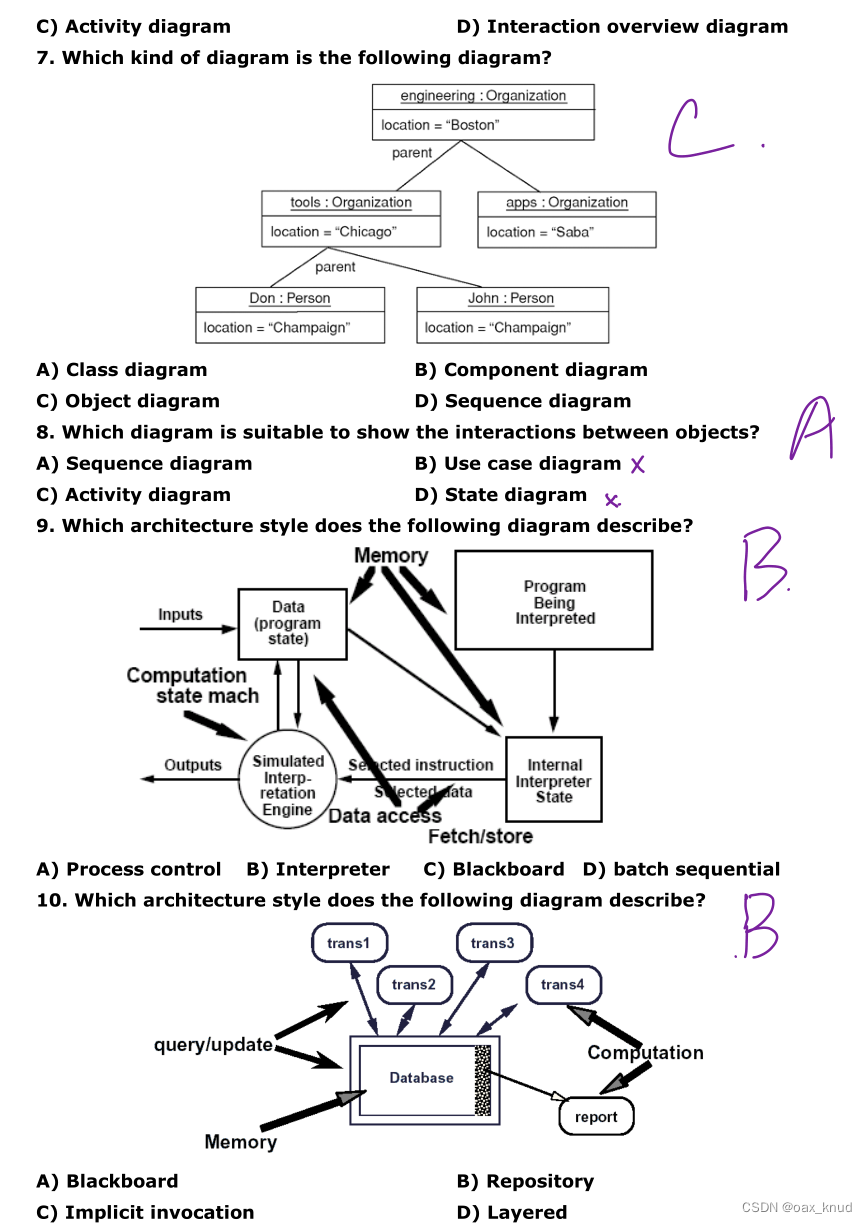
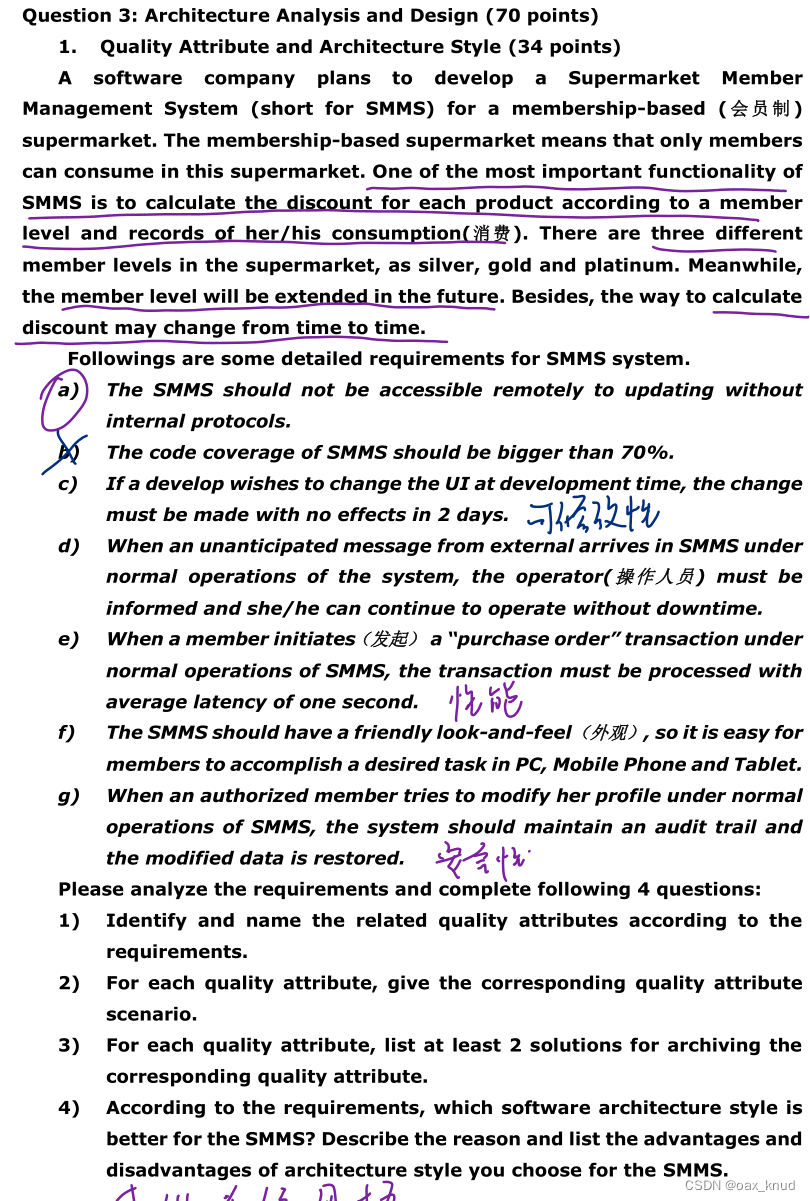
-
Utility Tree (16 points)
A software company plans to develop a data processing system. The development team analyzed the Quality Attributes, designed architecture and wanted to use Utility Tree to evaluate the architecture, followings are the scenarios.
a) There are two roles in the system: administrator and user. An administrator can create one or more users, and grant them the permissions accordingly.
b) Users are identified by their mobile phone numbers, and they can set a nickname having least 5 characters starting with letters.
c) The cost for adding a new data processing algorithm to the system by a developer is less than 10-person days.
d) The processing latency on main database need to be reduced to 100ms.
e) Change Web user interface in < 3-person weeks.
f) The application can display the processing results for an authentication user, and the authentication works 99.99% of the time.
g) When power outrage happens at site 1, it takes at most 3s to redirect
all traffic from site 1 to site 3.
h) If a user forgets his password, he can reset his password by receiving a message from the system.
i) The latency for processing a 1GB video data (1080p) must be less than 10s.
j) The network failure can be detected automatically and recovered in < 2.5 min.
k) The system must have a user authorization database to record the user permissions, and the authorization works 99.99% of the time.
According the scenarios, please construct a Utility Tree. -
Architecture Evaluation (20 points)
Identifying and recording risks and non-risks, sensitivity points and tradeoffs are important tasks in architecture evaluation. Please describe the definitions of risk, non-risk, sensitivity point and tradeoffs and then read the following descriptions and point out each description is a risk, non-risk, sensitivity point or tradeoff.
a) The number of concurrent requests will affect the number of transactions a database can process per second.
b) Changing the level of authentication could have a significant impact on both security and performance.
c) Some business processing component is provided by a third-party
company, there is no way of detecting the failure of them directly.
d) Assuming the request arrival rate is twice per second, and the average processing time is less than 80ms; a 1 second response time seems reasonable for our system.
e) Some of the legacy data processing components are implemented by the C++ programming language, which should be encapsulated ( 封装 ) first and are hard for a Java program to maintain and modify them.
f) The selection of the encryption algorithm might be closely related to the number of bits of encryption
二、核心考点汇总
2.1 什么是软件体系架构?(软件体系结构的定义)
基于1993年D Garlan,Mshaw 的软件体系结构定义,可以认为软件体系结构由三大要素组成,分别为:组件,连接件,约束。其作用如下:
- 组件:具有某种功能的可重用的软件模块单元,表示了系统中主要的计算单元和数据存储。
- 连接件:表示了组件之间的交互。简单的连接件有:管道,过程调用、事件广播等。复杂的连接件有:客户-服务器通信协议,数据库和应用之间SQL连接等。
- 约束:表示了组件和连接件的拓扑逻辑和约束。
2.2 架构风格优缺点
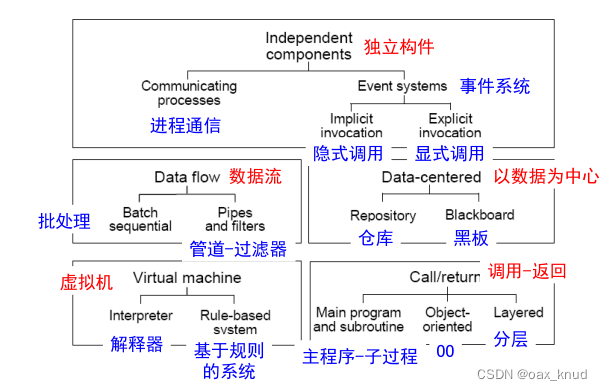
掌握所有架构风格优缺点和原理。
以数据流风格为例:
1、 总体描述:
【组件】数据流风格组件为计算模型,包括输入接口和输出接口,输入接口读取数据流的数
据,通过计算模型处理数据得到结构,将其写入输出接口。【连接件】连接件为数据流,前
一个组件的输出接口输出的数据通过数据流传输到下一个组件的输入接口,连接件主要起传
输数据的作用。
2、 批处理风格【大量整体数据传输时适用】
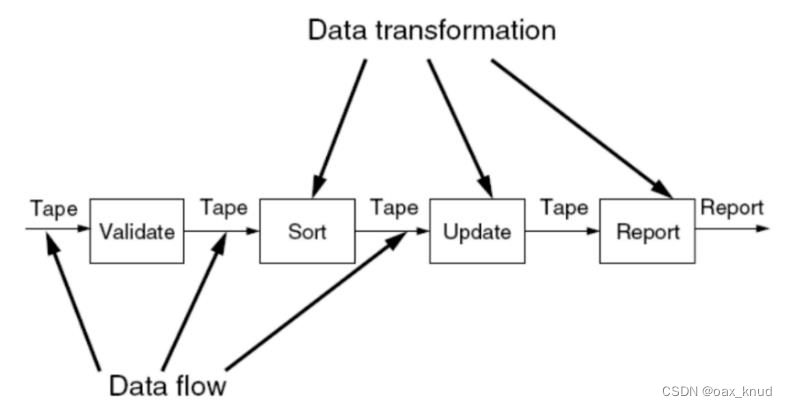
【组件】批处理风格的组件是独立计算的程序,【连接件】连接件为某种传输数据的媒介
【优点】
- 无需考虑同步问题:数据是完整的,以整体的方式在组件之间进行传输,因此无需考虑
同步数据问题; - 可以随机存取数据:由于数据是完整传输的,因此在获取数据时,可以完整的存取所有
数据。
【缺点】
- 计算效率低,系统性能差,无法并行计算:批处理的处理单元必须在前一个处理单元完
全处理完毕后再进行计算,因此系统计算效率低。 - 无法实时计算:每个组件之间的计算顺序是固定的,因此若实时计算,会存在计算延时
现象 - 交互性差:每个组件都对完整的数据进行计算,因此在处理数据过程中,用户不易交互。
【应用】编译器,CASE 应用程序;基于 eclipse 的代码重复检测工具
3、 管道过滤器【流式数据传输并且知道流向时适用】
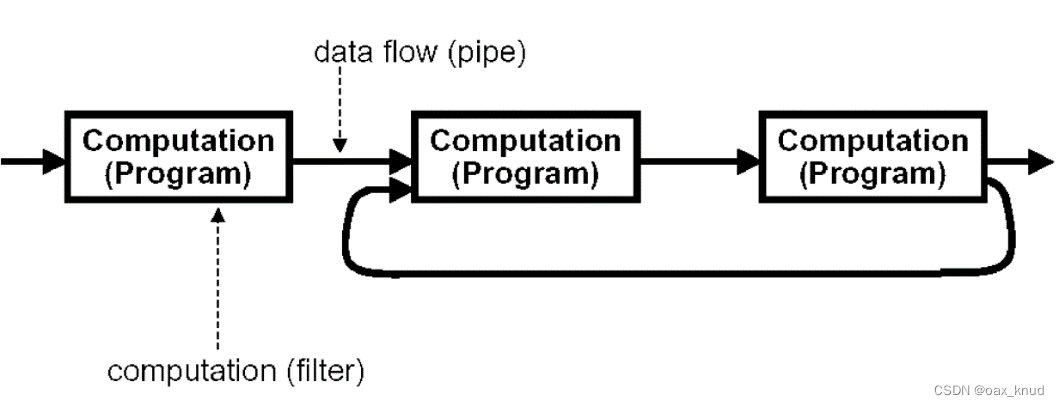
【组件】管道过滤器风格的组件是过滤器,过滤器将源数据转换为目标数据,功能包括增加,
删除,转换,合并,分解。【连接件】管道过滤器风格的连接件是管道,管道的主要作用在
于在过滤器之间传输数据。两个过滤器之间通过管道进行数据的传输。
【优点】
- 可以并行计算:由于管道过滤器输入数据为流式数据,因此对于不同的数据流可以在不
同的过滤器上进行并行计算。 - 支持软件的复用:过滤器之间只要数据格式满足输入输出要求,任何两个过滤器均可以
进行连接。 - 组件具有良好的隐蔽性,高内聚,低耦合的特点:整个系统的输入输出可以看作内部多
个过滤器行为的合成。 - 系统易于维护和扩展:系统中仅需要通过增加过滤器便可以进行系统功能的扩展;同时
也仅需要维护某一个过滤器便可以进行功能的维护。
【缺点】
- 性能不高:过滤器之间数据的输入输出格式往往没有统一的标准,因此在过滤器之间数
据进行传输的过程中,过滤器要对数据进行解析才能继续使用数据,系统大量事件用户
数据格式的转换与解析,因此实际功能的效率较低。 - 不适合用户交互处理:当系统需要增量改变时,管道过滤器往往无法进行很好的工作。
【应用】编译器,图像处理程序,语音处理,数据处
2.3 质量属性
了解定义,六要素,以及对应的策略
以可用性为例进行说明:
可用性 availability
1、 定义:在要求的外部资源得到保证的前提下,产品在规定条件下和规定时刻或时间区间
内处于可执行规定功能状态的能力。
2、 六要素

策略:
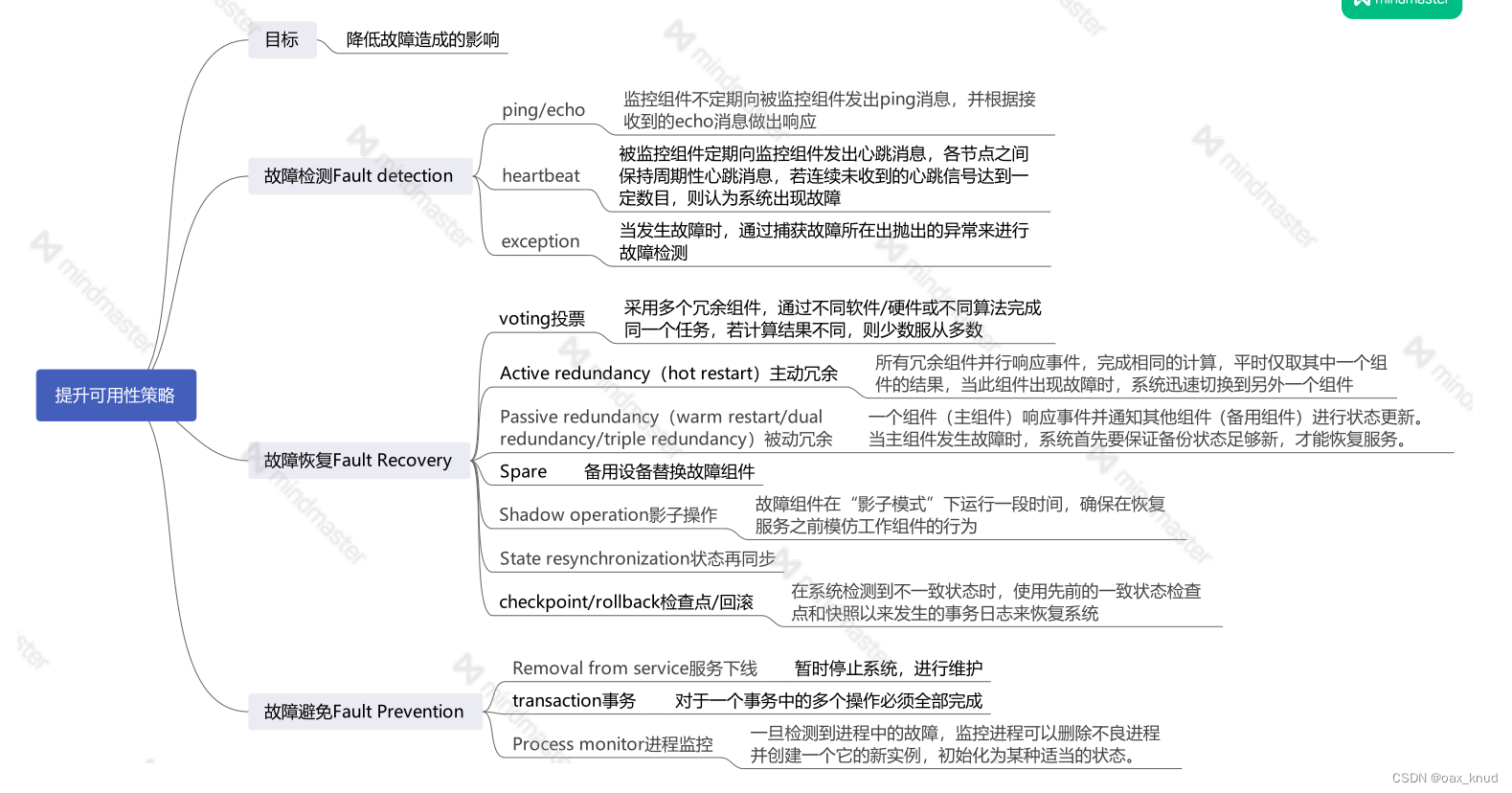
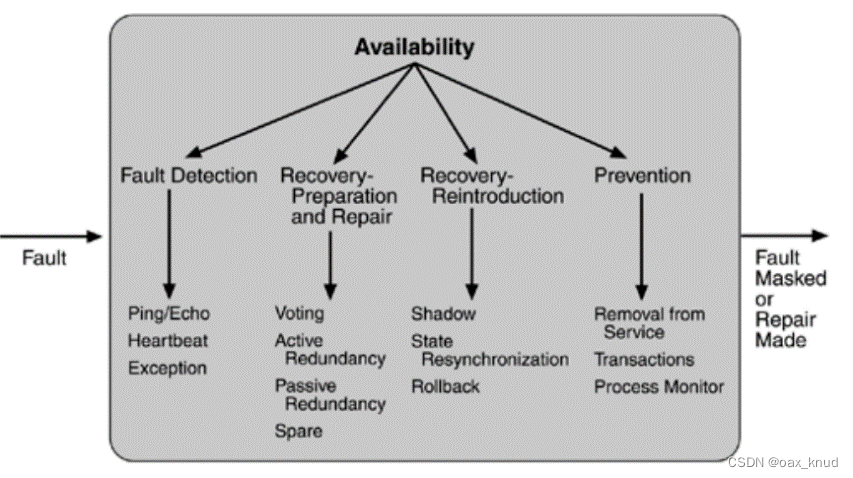
2.4 质量评估
背会风险,非风险,敏感点,权衡点定义,并会根据场景分析哪个是风险,非风险,敏感点,权衡点。

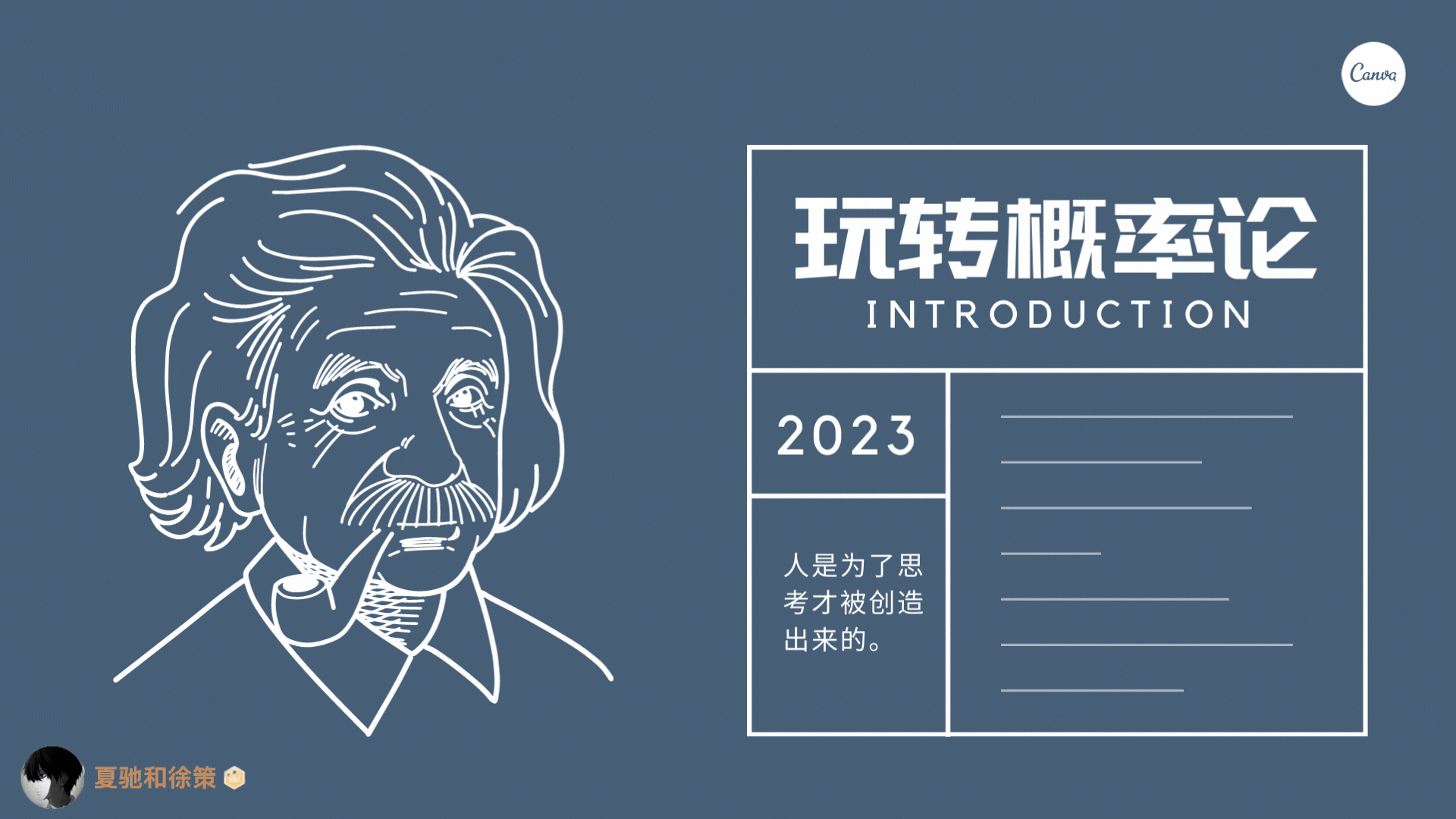

![[2.1.1]进程管理——进程的概念、组成、特征](https://img-blog.csdnimg.cn/img_convert/d8f6ea45cd2a9cfc862038f463152820.png)



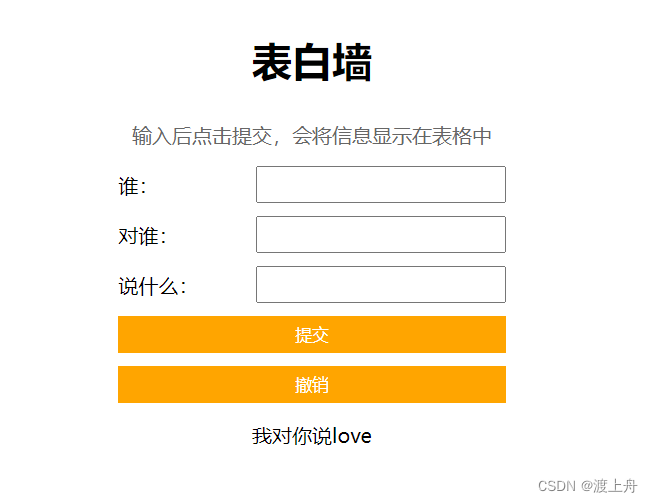
![[Mybatis1]介绍与快速入门](https://img-blog.csdnimg.cn/0fc94d4f2dd34b1192487c4ab1b21229.png)
